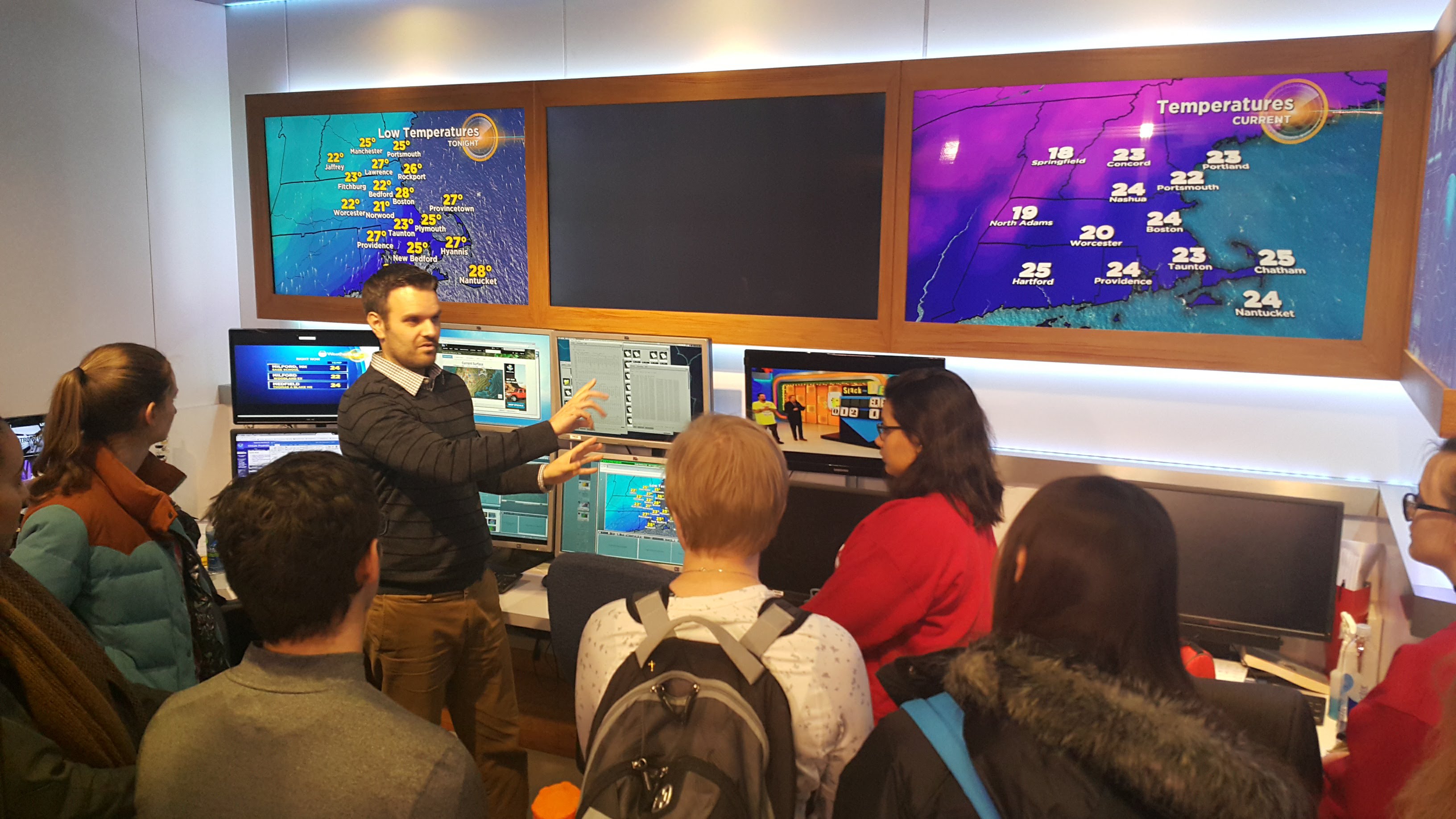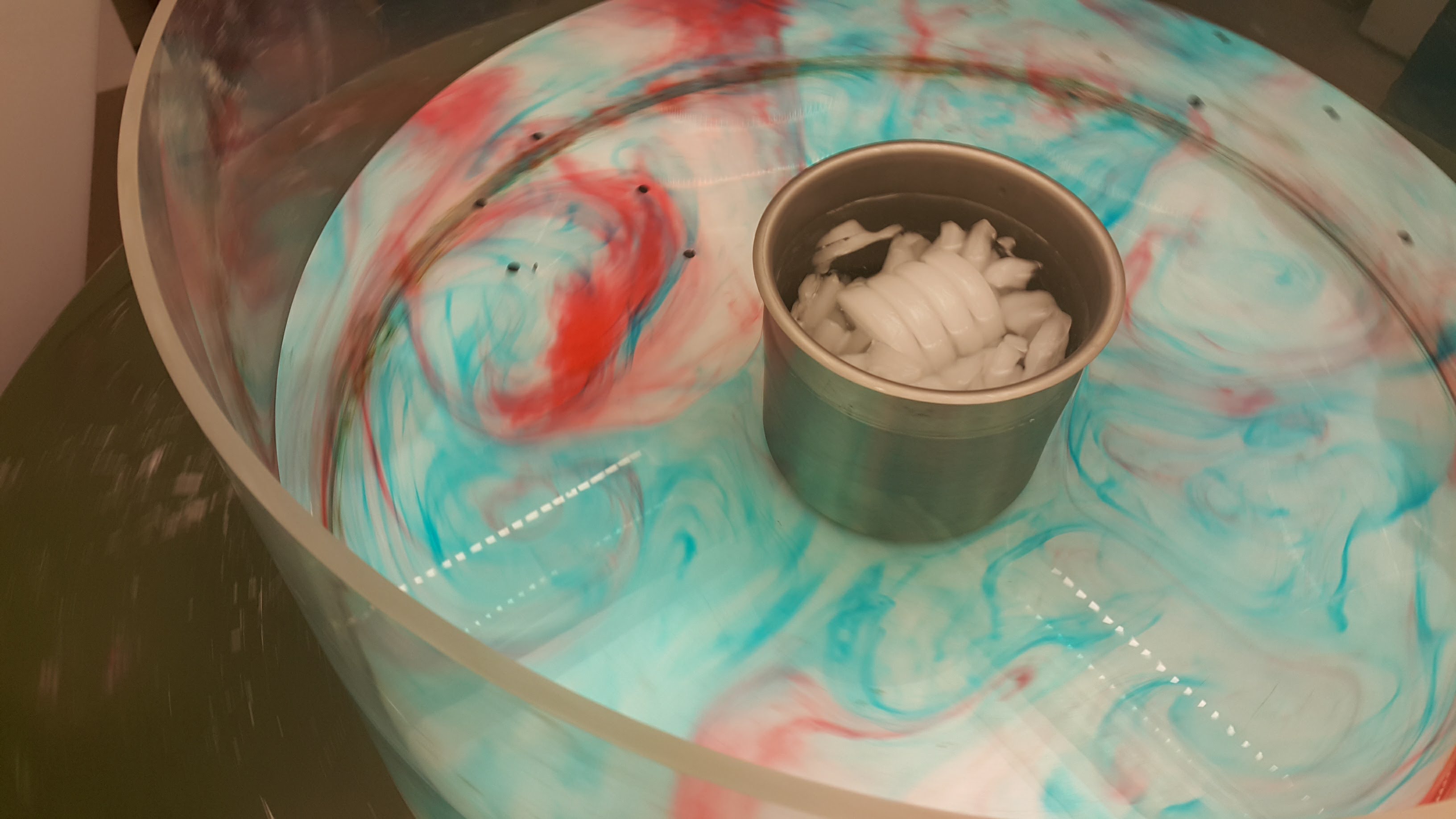Featured Stories, MIT, MIT EAPS, News | March 9, 2018
Foray into Weather Forecasting
Students learn about synoptic meteorology and weather forecasting during the 2018 Independent Activities Period

By Lauren Hinkel
The Independent Activities Period (IAP) at MIT is a special four-week period during January in which the MIT community (students, faculty, staff, and alums) can participate in a wide variety of projects and ventures. These include how-to sessions, forums, lecture and film series, tours, recitals, contests, as well as short for-credit courses on more academic subjects. For over four decades, IAP has encouraged MIT members to try their hand at a new activity or refine a skill in an exciting environment.
Each year over IAP, the Department of Earth, Atmospheric and Planetary Sciences (EAPS) offers lab classes and field camps to graduate and undergraduate students. A popular choice among them is “12.310: An Introduction to Weather Forecasting,” a 2-week program taught by EAPS senior lecturer Lodovica Illari. “I have been teaching this course for many years and it is my favorite,” Illari says. “It attracts a variety of students, from weather enthusiasts to others simply interested in the environment, exploring possible majors, and it offers me the opportunity to show them how exciting atmospheric science is.”

The course introduces the basic principles of synoptic meteorology and weather forecasting using analysis of weather data and numerical weather prediction models. “For two weeks, we keep an eye on the current weather, and we learn how to interpret and use forecast outputs,” Illari says. “The class is practical, and the students learn by doing under the guidance of motivated graduate teaching assistants.”
This year, with the help of EAPS Program in Atmospheres, Oceans and Climate (PAOC) graduate students Rohini Shivamoggi, Ali Ramadhan, Jonathan Lin, Meghana Ranganathan, and lab assistant Bill McKenna, ten students learned about surface observations, upper air winds, fronts and extra-tropical cyclones. The class took a hands-on approach to the investigation of large meteorological concepts. In addition to reading and lectures, Illari showed students how to use analyses and forecasts of pressure, temperature, moisture, wind, and precipitation from National Weather Service models to make their own weather forecasts, They followed the development of storms, anticipating when a front was likely to pass and precipitation was to come. Students observed national and local weather, paying particular attention to the weather feature discussed in the prior class. “Weather in a Tank” rotating fluid experiments and case studies bolstered the lessons.

The students took on the role of amateur meteorologists for the last week of the course. Applying their knowledge of weather maps, physics and atmospheric dynamics, class members participated in a forecasting challenge, submitting a daily temperature max/min and precipitation forecast for the following day. This year Jacqueline Ahrens, a freshman interested in majoring in environmental science, won the competition and received a small prize: an indoor/outdoor digital thermometer. The class also visited a local weather station, WBZ-TV at CBS Boston, to learn more about how weather forecasting happens in the real world and the job’s challenges from veteran forecasters like Barry Burbank. Back at MIT in small groups, members stepped behind the camera, creating and presenting their own TV-style forecast for Billings, MT; South Bend, In; or New Orleans, LA. Different locations, which are thought to have highly variable weather, are carefully chosen each year by Illari to challenge the students’ predictions. The students showcased their personalities and different forecasting styles: some presentations were scientific while others were more humorous.

At the end of the course, class participants have learned not only how to make their own forecasts, but they have also established a relationship with the department. “Every year a few of them come back to EAPS to take other courses or to join the MIT Forecasting Team,” Illari says. “For me, it is very rewarding to see them back.”
While several students wished the class went on longer in order to hone their forecasting skills, many felt a further appreciation for the field of meteorology and the teaching tools available at MIT. “The Weather in a Tank’ demonstrations are excellent and a highly recommended experience. I wish these could be conducted in more classrooms around the world, especially in high schools,” said one student. Illari’s enthusiasm for the subject certainly heightened the learning experience. “She was definitely very knowledgeable and her passion for the field was contagious.”



